Effective Carpet Flea Treatment & Prevention Tips
Implementing Flea Treatment: Step-by-Step Guide
The effectiveness of flea treatment hinges not just on the products used but also on the thoroughness of the application. A comprehensive approach, addressing both the environment and the host (if pets are present), is essential for eradicating fleas from the home.
How Long Does Flea Treatment Take to Work?
The time frame for flea treatment effectiveness can vary depending on the method used.
Chemical treatments may begin killing fleas within a few hours, but it's crucial to continue monitoring and treatment, as flea eggs may hatch over several weeks. Consistency is key; a single application may not be sufficient to eliminate all life stages of the flea.
Natural Remedies
In addition to chemical treatments, natural remedies can play a significant role in flea control. Diatomaceous earth, for example, can be sprinkled on carpets to dehydrate and kill fleas physically.
Essential oils like lavender and peppermint are also cited for their flea-repellent properties, but they should be used with caution, especially around pets.
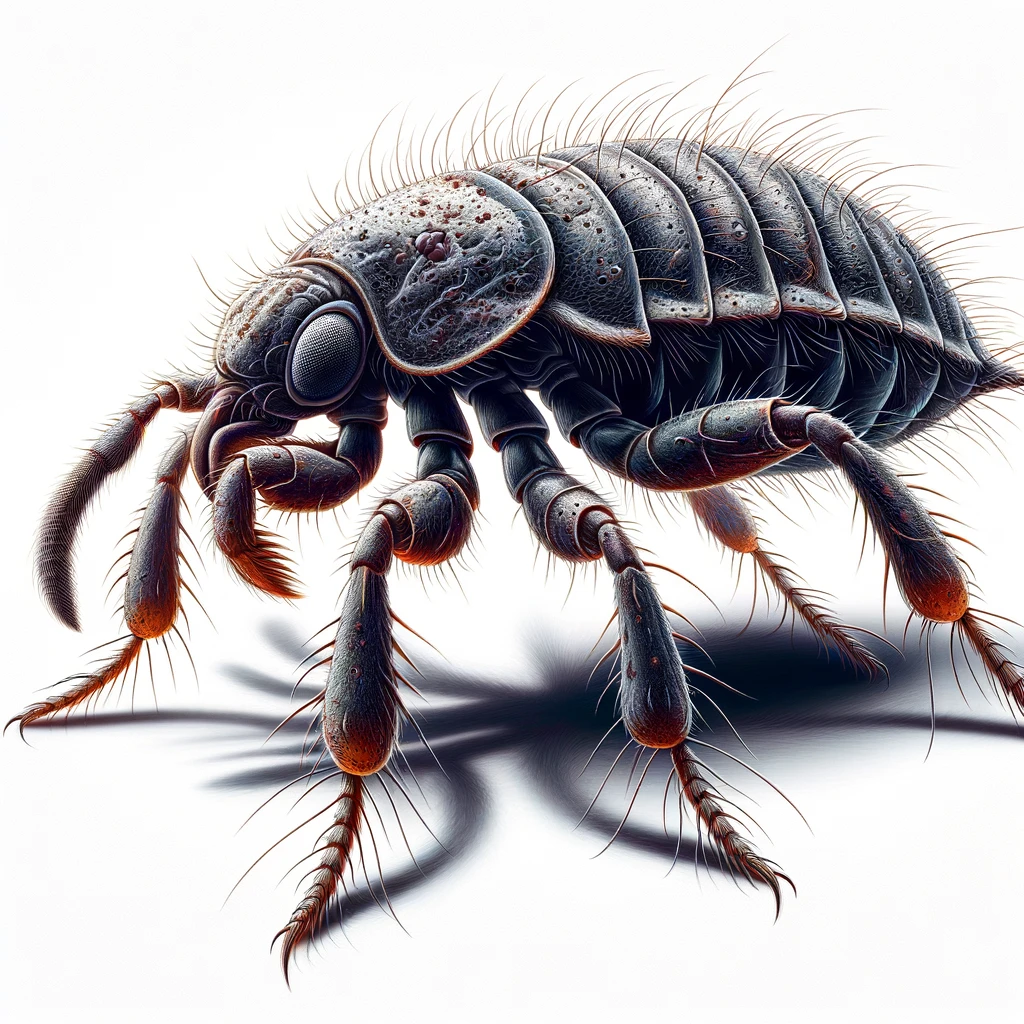
Common Carpet Pests Sections
Preventing Future Flea Infestations in Carpets
Maintaining a flea-free home requires ongoing vigilance and preventive measures. Regular cleaning, along with specific strategies, can significantly reduce the likelihood of flea infestations.
Does Vacuuming Kill Fleas?
Regular vacuuming is a powerful tool in flea prevention, capable of removing fleas at all stages of their lifecycle from your carpet. Pay particular attention to areas where pets rest, as well as under furniture and along baseboards.
Natural and Chemical Preventive Measures
Incorporating preventive measures can further safeguard your home against fleas. Flea-preventive treatments for pets, maintaining a clean home, and using natural deterrents can all contribute to a flea-free environment.
For severe or persistent problems, consider a year-round flea control product designed for use in carpets.
Repairing Moth Damage: From Identification to Restoration
Identifying Moth Damage on Carpets and Rugs
Moth damage often appears as irregular holes in carpets or rugs, especially in less trafficked or dark areas. If you notice such damage, it's crucial to inspect for larvae or silken tunnels, which indicate an active infestation. Early identification can prevent further damage and make restoration efforts more effective.
Professional Restoration Techniques for Moth-Damaged Rugs
For valuable or antique rugs, professional restoration may be the best course of action. Expert restorers can reweave damaged areas, matching the original patterns and colours closely.
This process, while often costly, can restore the rug’s beauty and extend its life significantly. Always seek multiple opinions to ensure the best approach for your specific piece.

Cleaning Methods
Advanced Carpet Maintenance Strategies
Advanced carpet maintenance goes beyond regular cleaning and involves strategies that ensure the longevity and durability of your carpets. Using steam cleaners for carpets is a highly effective method for deep cleaning and sanitizing. This section provides in-depth information on how to use these tools effectively, along with tips and tricks for keeping your carpets looking and feeling new.
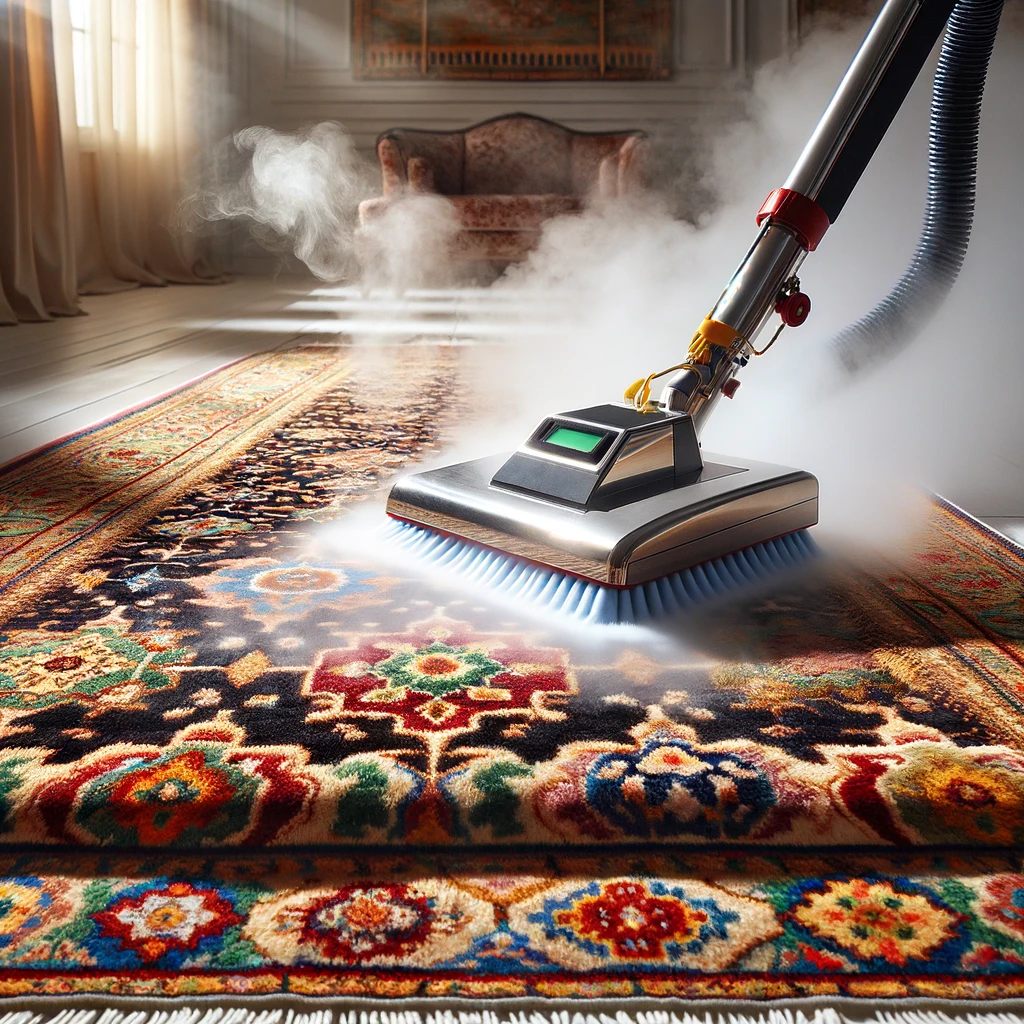
Steam Cleaning
Steam cleaning for Persian rugs involves a gentle yet effective method of deep cleaning, removing dirt and allergens without damaging delicate fibers, preserving beauty and longevity.
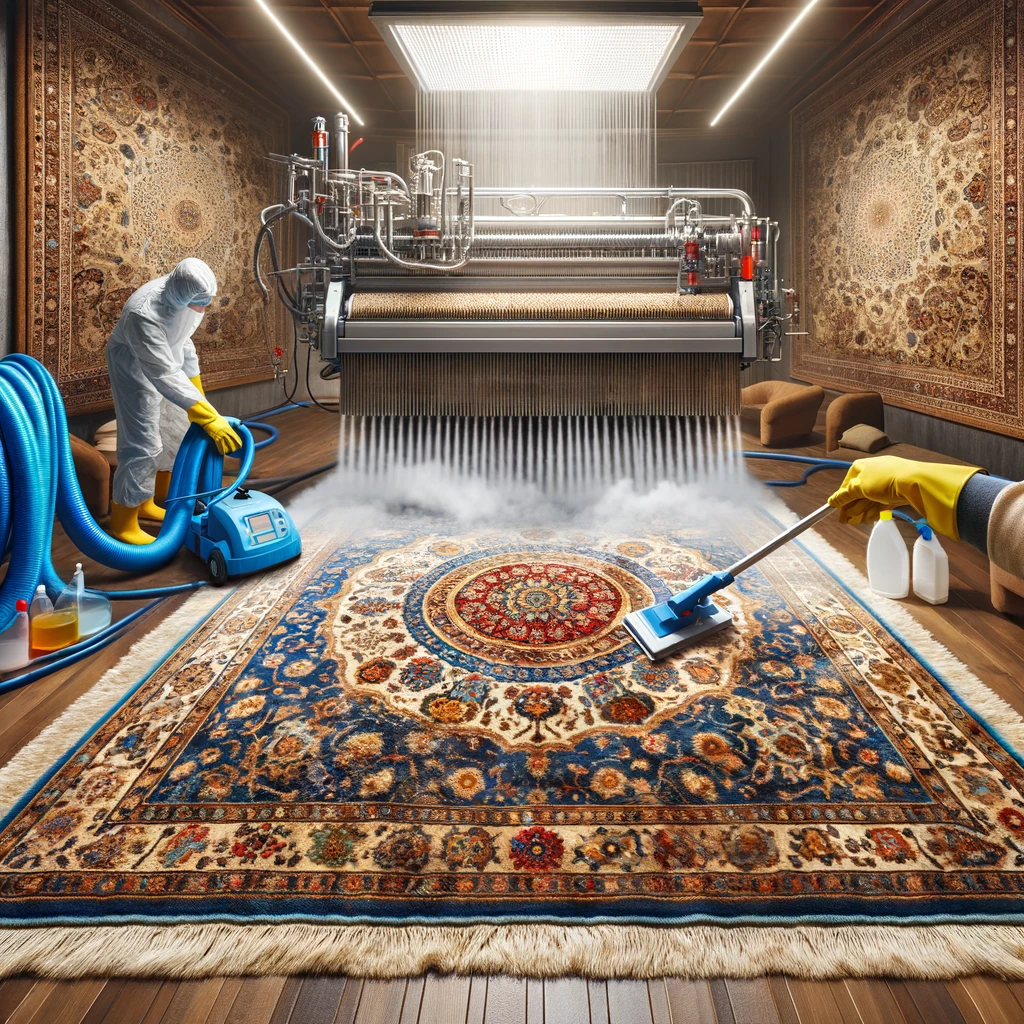
Deep Cleaning
Deep cleaning Persian rugs requires specialized techniques to remove deeply embedded dirt and restore their vibrant colors, ensuring the preservation of their intricate designs and durability.
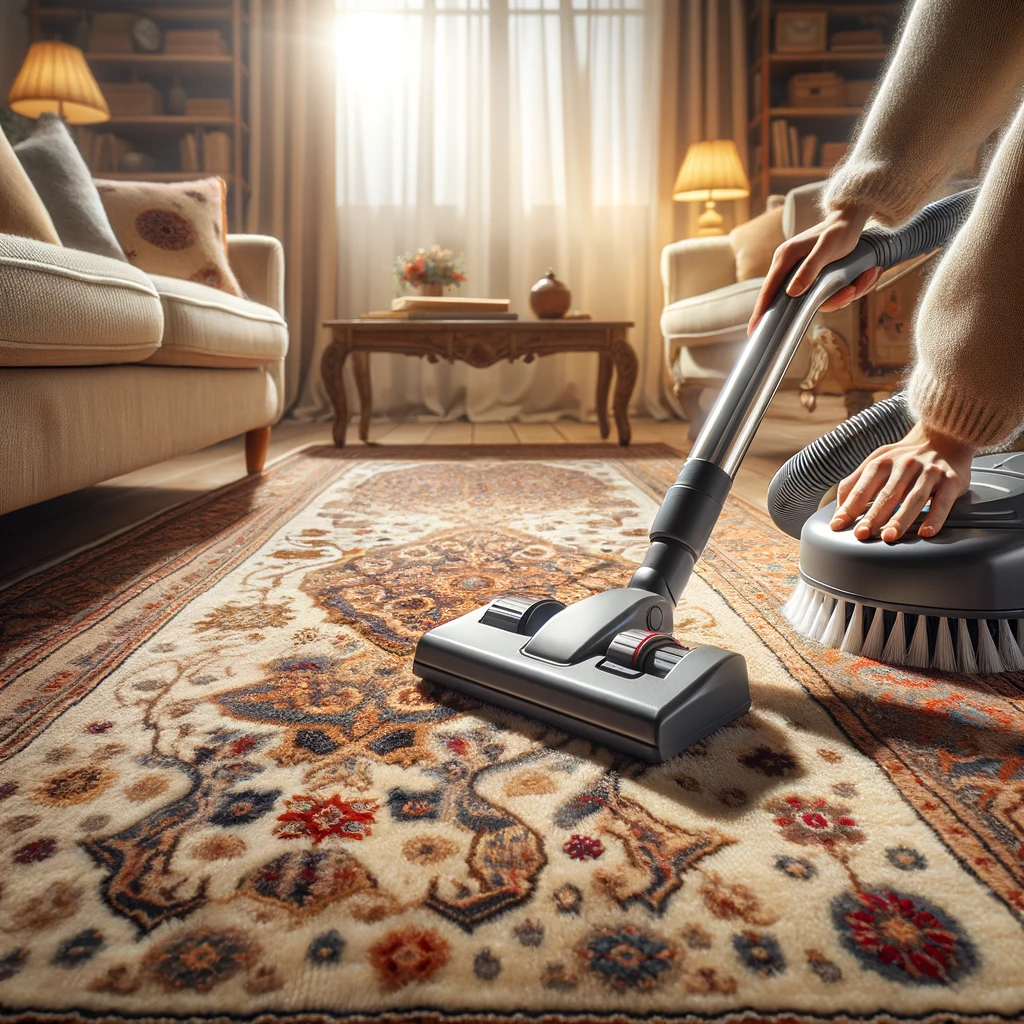
Vacuum Cleaning
Vacuum cleaning for Persian rugs focuses on removing surface dust and debris gently, protecting the rug's intricate patterns and delicate fibers from wear and damage.

Stain Removal
Stain removal for Persian rugs addresses common damage issues like spills and spots, using careful techniques to preserve colors and fibers while eliminating blemishes.
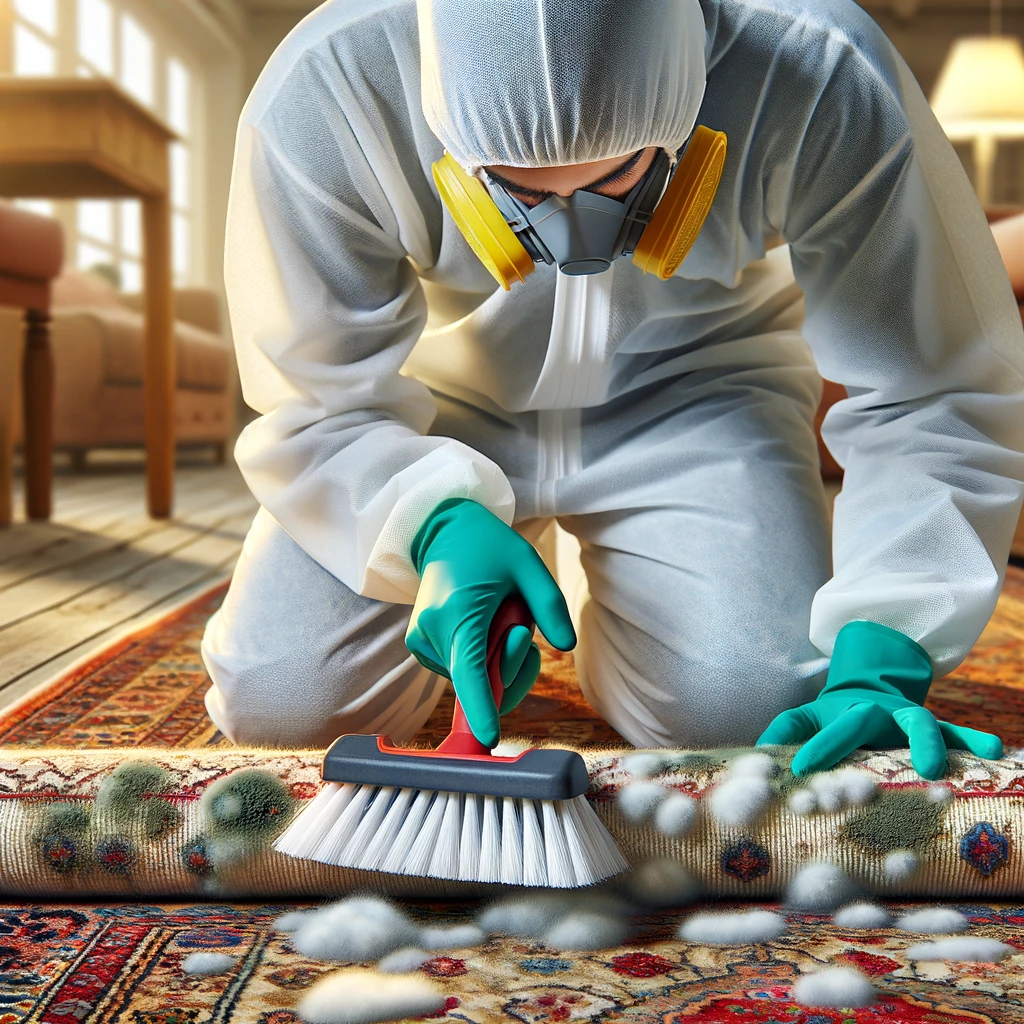
Mold Removal
Mold removal for Persian rugs tackles common damage issues such as mildew and fungus, employing safe methods to eradicate growth and restore rug health without harm.
Joe Rugs - Carpet Expert
Hello! I'm Joseph Rugs, the founder of CarpetJoe.com and your guide through the intricate world of carpets. Born and raised in London with a deep-rooted passion for art and culture, I've explored the globe to bring the rich tapestry of carpet weaving right to your screen. My academic background in arts and humanities from Oxford has fueled my curiosity, leading me to uncover the stories behind every knot and weave. As a family man, my adventures are shared with my loved ones, enriching our lives with every piece of art we encounter. Join me as we explore the beauty and craftsmanship of carpets together.
Carpet Repair & Restoration Guides
Carpet damage can range from minor issues like small burns or stains to more significant problems such as large tears or widespread wear.
Identifying the type of damage is the first step in determining the most suitable repair method.
Master carpet repair with our guides. Learn about fixing burns, holes, and wear in carpets and rugs, including DIY patch repairs and professional restoration tips.
Frequently Asked Questions
Flea bites are small, red, and sometimes surrounded by a halo. They can be very itchy and tend to be found on the lower legs and feet.
Fleas are tiny, dark brown insects about 1-3 mm long, with a thin, flat body and strong legs for jumping.
Flea eggs are tiny, white, and oval-shaped, making them hard to spot on most surfaces.
The effectiveness varies; immediate results can be seen with some treatments, but it may take several weeks to fully eliminate an infestation.
Clean the area with soap and water, apply ice to reduce swelling, and use antihistamines or hydrocortisone cream to alleviate itching.
Specific flea treatments designed to target eggs and larvae, such as insect growth regulators, are effective.
Regular vacuuming, steam cleaning, and the use of flea carpet powders that target eggs can help eliminate them.
Use a combination of vacuuming, washing pet bedding, applying flea treatments to pets, and using flea carpet treatments.
Fleas can live in the carpet for several months without a host, depending on the life stage.
Yes, vacuuming can remove fleas at all life stages from your carpet and is recommended as part of a flea control strategy.
Products containing insect growth regulators and adulticides are among the strongest and most effective for treating carpets.
Natural methods include diatomaceous earth, baking soda, salt, and essential oils, though their effectiveness may vary.
Fleas dislike the smell of cedarwood, lavender, peppermint, and lemongrass, among others.








